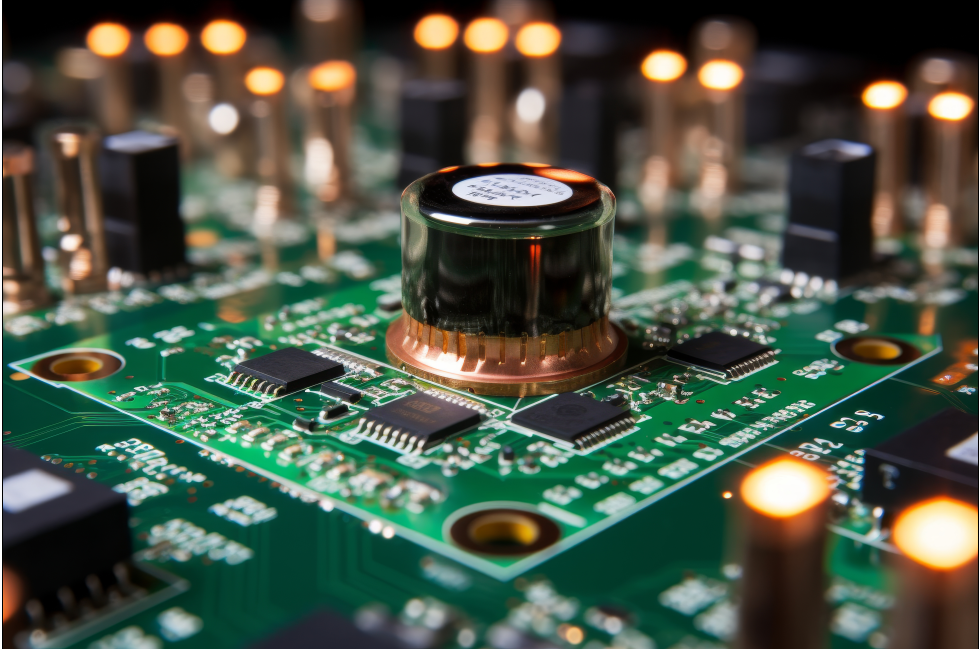Temitayo Oketola | June 14, 2024
Photodiode light sensors are essential components used in a variety of applications, including consumer electronics and advanced industrial automation. These devices are used to detect light and convert it into an electrical signal. This capability makes them suitable for devices that require accurate light measurement and control.
The growing demand for photodiode sensors has led to technological advancements and an increasing number of applications that benefit from their reliability and efficiency. As a result, several types of photodiode sensors are available today, each with a unique working principle, operation mode and suitability for different applications. Therefore, it is important to have a basic understanding of photodiodes before choosing one for an application.
 Photodiode light sensors are essential components used in consumer electronics and advanced industrial automation devices. Source: aicandy/Adobe Stock
Photodiode light sensors are essential components used in consumer electronics and advanced industrial automation devices. Source: aicandy/Adobe Stock
Working principle of photodiode light sensors
To grasp how photodiode light sensors work, it is essential to understand the photoelectric effect.
The photoelectric effect is a phenomenon where photons (or light particles) transfer energy to electrons in a semiconductor material. When photons strike the surface of a photodiode, they excite electrons and create electron-hole pairs (electrons and the positively charged holes they leave behind). These charge carriers are then separated and moved across a junction by an electric field within the sensor, generating a current that is proportional to the light intensity.
![Photoelectric effect in a solid. Source: Ponor/CC[SA][4.0]](https://insights.globalspec.com/images/assets/505/22505/Fig5.png) Photoelectric effect in a solid. Source: Ponor/CC[SA][4.0]
Photoelectric effect in a solid. Source: Ponor/CC[SA][4.0]
Photodiode light sensors operate in two main modes: photovoltaic mode and photoconductive mode. In the photovoltaic mode, the photodiodes generate a voltage directly when photons strike their surface. This mode is usually achieved without any external power supply, making them commonly used in solar cells where the light-induced voltage is used to power devices. In contrast, the photoconductive mode requires an external voltage to be applied in the opposite direction of the current flow. This mode increases the electric field across the junction, enhancing the sensor’s response time and sensitivity. Engineers typically use them in applications that require fast and accurate light detection.
Types of photodiode light sensors
Photodiode light sensors come in various types, each with its unique characteristics and suitability for specific applications. The most commonly used types are:
- PN photodiodes
- PIN photodiodes
- Schottky photodiodes
The PN photodiode is the most basic type of photodiode that features a p-type (positive) and n-type (negative) semiconductor junction. They generate electron-hole pairs and electric current when light photons hit the junction. PN photodiodes are used in simple light detection devices, such as light meters and optical switches. Their simple design and low cost make them a popular choice for applications that do not require extremely high sensitivity or speed.
PIN photodiodes operate similarly to the PN photodiodes but differ in design. Unlike PN photodiodes, the PIN photodiodes include an intrinsic (undoped) layer between the p-type and n-type layers. This intrinsic layer increases the depletion region where the electron-hole pairs are generated and separated, enhancing the photodiode’s response time and sensitivity. They are ideal for applications that require high-speed and low-light-level detection, such as in fiber optic communication systems and medical imaging devices.
Schottky photodiodes utilize a metal-semiconductor junction instead of the conventional p-n junction. This unique design allows them to have low capacitance, contributing to their fast response time. The Schottky photodiodes are used in high-frequency applications, such as in radio frequency (RF) communication systems and high-speed photodetection applications.
[Learn more about photodiodes on GlobalSpec]
Key specifications
When choosing a photodiode light sensor for an application, several key specifications must be considered:
- Responsivity: a measure of how efficiently the photodiode converts light into electrical signal. It is obtained by calculating the ratio of the output current to the incident light power. A photodiode with high responsivity means that the sensor can detect lower light levels more effectively.
- Dark current: the small current that flows through the photodiode even when no light is present. Photodiodes with lower dark currents are preferable in low-light applications, as they indicate better sensitivity and less noise.
- Response time: a measure of the time it takes the photodiode to respond to a change in light intensity. Photodiodes with fast response times are ideal for high-speed applications, such as optical communication and safety systems.
- Noise equivalent power: a measure of the ratio of charge carriers generated to the number of incident photons on the photodiode surface. Photodiodes with higher quantum efficiency are more efficient at converting light into electrical signals.
[Learn more about photodiode specifications on GlobalSpec]
Conclusion
Photodiodes are essential components that play a crucial role in many technologies, helping to measure light intensity accurately. While this article presents the basic working principles, types and key specifications of photodiodes, there are several other factors to consider when choosing one for an application. For instance, the wavelength sensitivity, temperature stability, packaging and environmental durability of the photodiode can significantly impact its performance in specific applications. Therefore, it is recommended that engineers reach out to photodiode suppliers to discuss application requirements.
INDUSTRY RELATED
UNLIMITED FREE ACCESS TO THE WORLD’S BEST IDEAS
SIGN UP TO SEE MORE
This is embarrasing…
An error occurred while processing the form. Please try again in a few minutes.
Customize Your GlobalSpec Experience
This is embarrasing…
An error occurred while processing the form. Please try again in a few minutes.
